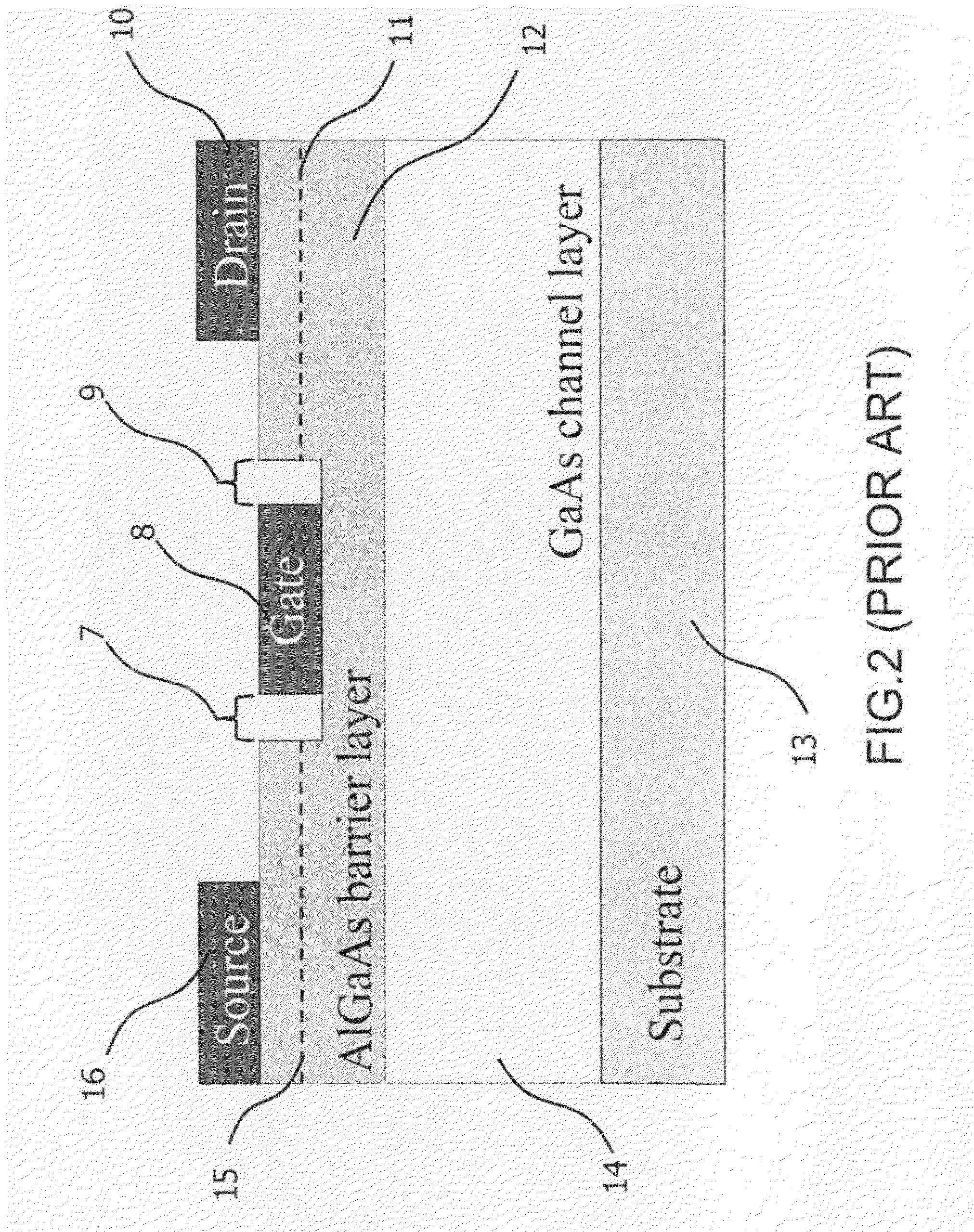HFET with low access resistance
a technology of access resistance and transistor, which is applied in the direction of semiconductor devices, basic electric elements, electrical apparatus, etc., can solve the problems of discontinuity in the channel doping modulation, the maximum rf performance, and the difficulty of making the device operate in enhancement mode, so as to reduce the dispersion phenomenon associated with the effect of specific on resistance, reduced specific on resistance, and improved control of the transport properties of the devi
- Summary
- Abstract
- Description
- Claims
- Application Information
AI Technical Summary
Benefits of technology
Problems solved by technology
Method used
Image
Examples
Embodiment Construction
A FIG. 4
[0072]FIG. 4 is showing a Hetero-structure FET (HFET) device according to the preferred embodiment of the invention. The metallic or n+-type semiconductor regions 28 and 25 formed directly into the channel layer 27, define the source and the drain of the transistor. Regions 24 corresponds to the barrier layer of the device, and the channel layer 27 is the region where the electron (or hole)—channel is formed. Region 23, which can be formed using semiconductor materials or metal, corresponds to the gate of the device. As it can be seen, differently from the conventional HEMT structure of FIG. 1, no access regions can be identified in the device.
[0073]If the desired device is an n-channel HFET, the channel region should have an electron affinity greater with respect to the barrier layer 24, in order to confine the carrier transport inside the layer 27 during the normal operation of the device. The gate region 23 instead, can be built with the same, greater or lower electron af...
PUM
 Login to View More
Login to View More Abstract
Description
Claims
Application Information
 Login to View More
Login to View More - R&D
- Intellectual Property
- Life Sciences
- Materials
- Tech Scout
- Unparalleled Data Quality
- Higher Quality Content
- 60% Fewer Hallucinations
Browse by: Latest US Patents, China's latest patents, Technical Efficacy Thesaurus, Application Domain, Technology Topic, Popular Technical Reports.
© 2025 PatSnap. All rights reserved.Legal|Privacy policy|Modern Slavery Act Transparency Statement|Sitemap|About US| Contact US: help@patsnap.com



